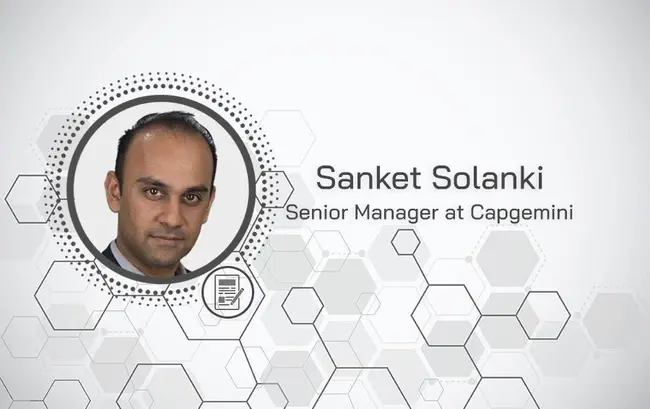This article was contributed by Sanket Solanki, Senior Manager at Capgemini.
Winning in the digital world requires a fundamental re-think on traditional operating models. With the volume of data growing at pace and ever-evolving consumer preferences, organisations should shift from the traditions of functional silos to an integrated operating framework, built around the right technologies in the customer journey.
While organisations understand the need to innovate and adapt, many don’t realise that this should be a continuous process. Redesigning an enterprise operating model as a tick-box exercise is not enough in today’s evolving business landscape. Instead, it must be a real-time, agile and ongoing effort.
Next-generation operating models are defined by continued efforts to improve and integrate innovative technologies – those which allow businesses to move, adapt and scale quickly when needed – whilst being designed around customer journeys (the set of interactions a customer goes through to ordering goods and services). Optimising a business’s performance will always be important, but implementing the right technology can dramatically alter both the scope and outcome of day-to-day activities for all stakeholders. Business leaders should consider if and where their current model fails and think multi-dimensionally to break down traditional silos and help their organisation connect better. Only once this process has begun can they start to think about implementing a next-generation model. But what exactly does this mean in practice?

Keeping pace with the digital economy
As the digital economy evolves and digital technology continues to transform economic activity, so too must businesses consider how best to drive value, enhance customer experience and build sustainable operating models.
With this in mind, there are several fundamental areas being heavily disrupted that organisations need to consider:
- Digital exchange – trillions of transactions power our economies every day. With an influx of modern technologies entering the market, even the way simple exchanges are being made has changed significantly.
- Digital supply network – the combination of digital and physical production and distribution methods allows linear supply chains to be transformed into interconnected, scalable systems through the likes of artificial intelligence (AI) and the Internet of Things.
- Customer experiences – personalised outsourcing has enabled customers to interact with businesses in any capacity, at anytime and anywhere they want.
- Augmented workforce – with digital transformation comes a need for wider change. Re-purposing the work employees do on a daily basis and combining this with AI means the nature of day-to-day business activity will change too.
- Digital connectivity – for any organisation, the coming together of the physical and digital world is an exciting time. Bringing together assets into one domain where software dominates provides organisations with a digital inventory at all times, enabling them to operate at a level of precision currently unimaginable.
These areas of digital transformation are paving the way towards leaner enterprises. By considering how they can adapt in each area under one operating model, organisations could see a clearer path to achieving their business goals.
Using next-generation operating models to get ahead
Keeping up with change is essential for any organisation but understanding what this means is another story altogether. Traditional operating models need to evolve as operations, processes, and technologies adapt to cope with higher volumes of data and changes in the way consumers pay for and experience new products. To continue building value and providing compelling customer experiences and services at a lower cost, organisations must commit to developing a next-generation operating model that excels. This is contingent on achieving two factors: integrated operations and enhanced customer experience.
Integrated operations centres around customer journeys to enable businesses to be more open and expansive when delivering at scale. By designing and implementing an integrated operating model, organisations will be required to break down internal walls, accelerate adoption, and gain buy-in from the C-suite.
Meanwhile, enhanced customer experiences leverage intelligent automation and AI to achieve straight-through processing. This in turn enhances analytics, monitoring and knowledge across the entire organization, allowing enterprises to reimagine and redesign how they do business.
Next-generation operating models provide traditional companies with big improvements in terms of cost, effectiveness and customer experience, helping them to remain competitive. These potential benefits should help organisations realise the need for an agile-digital operating model, and to understand how they can be best placed to reap the rewards of an enterprise-wide transformation.







Comments ( 0 )